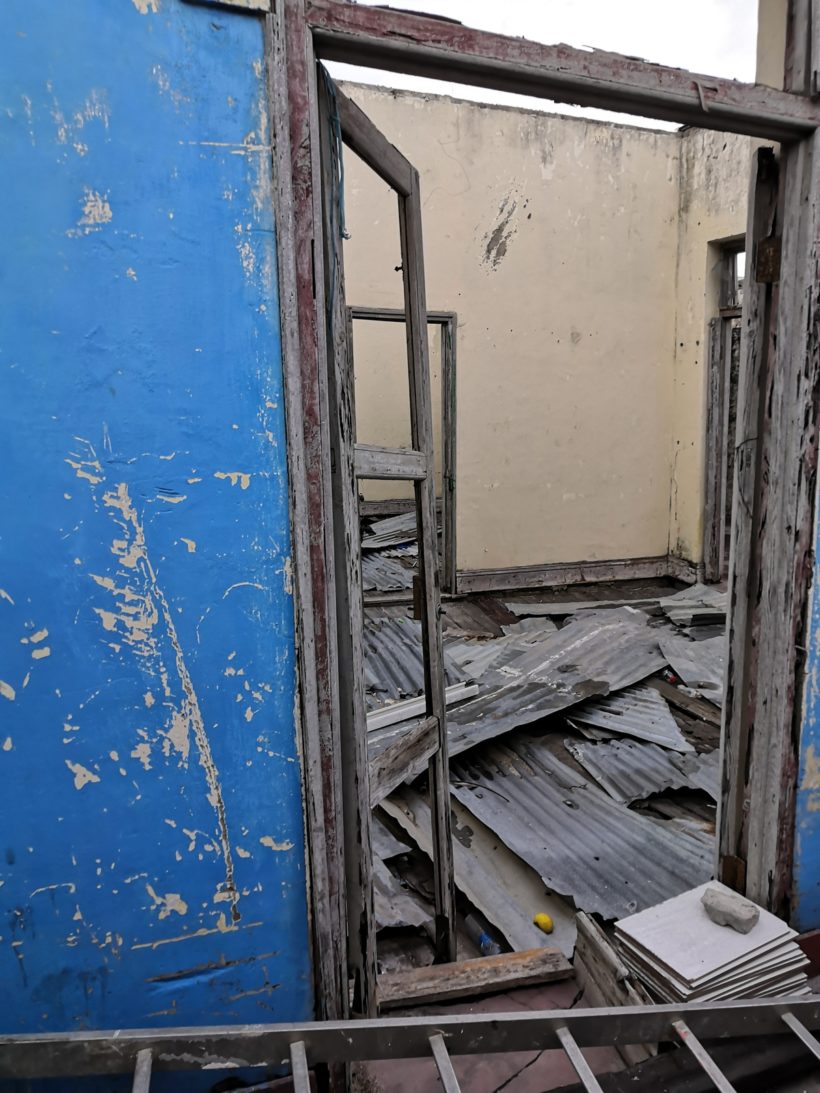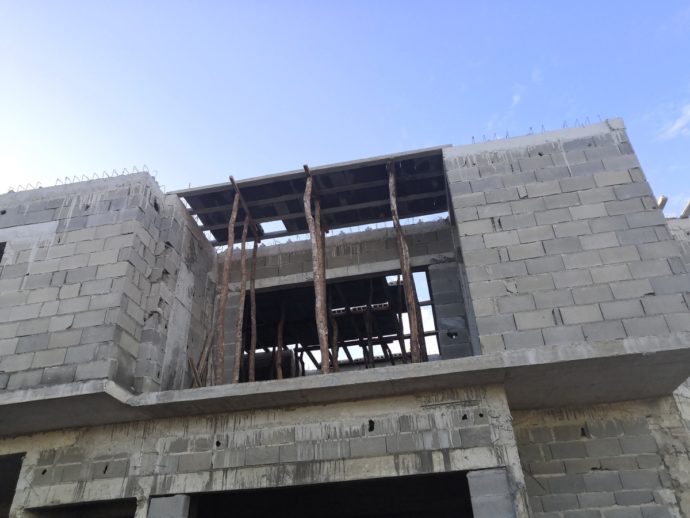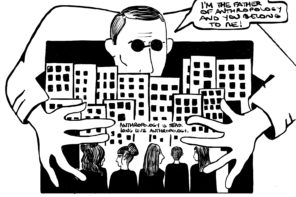The climate crisis is upon us. Extreme weather events such as floods, droughts, hurricanes, heatwaves and fires are increasingly wreaking havoc around the globe. Even in the cosseted bubbles of Fortress Europe, there is growing awareness that we’re hurtling into disaster and that we’ve only a short time window to try and turn things around. And that turnaround will by necessity be urban. Most positivist/alarmist predictions forecast that by 2050, two thirds of the world’s population will live in cities, making cities both a major driver of climate change and a key factor in seeking to mitigate against it. And most of that growth will be concentrated in large and mid-sized cities of the Global South, especially in Africa. Needless to say while such forecasts recognise the overall tendency towards urbanisation, they flatten distinctions between, for example, a booming megalopolis and a gradually urbanising provincial town, and they are also deployed as a narrative element to bolster specific narratives about our planetary futures.
Similarly, when we look at the solutions that are bandied about how cities should face the climate crisis, the first response is usually to throw money and big infrastructure at the problem: people talk about building a sea wall for New York City, new flood gates for the river Thames to protect London, or the promises of electric vehicle individual mobility and ‘smart’ green cities that will usher in new, utopian urban futures. Yet such techno-utopias and similar dreams of libertarian venture capitalists are out of reach for a majority of the world’s growing urban population.
Yes, it is true that with accelerating urbanisation, new strategies to address the climate crisis in cities are urgently needed. However, as long as conversations about urban adaptation are based on a generic ‘global city’, the proposed solutions will be capital-intensive and premised on the promise of rapid, smart technological advances. In the meantime, African cities, scripted as the ‘most vulnerable’ to climate risk, remain, in current debates about urbanism and climate change, overwhelmingly positioned as in need of receiving development assistance, technical fixes, and infrastructural investment.
Rather than seeing urban ‘precariousness’ as an endemic condition that mires African societies in a position of dependency, the thread takes it as an invitation to uncover strategies of living and making the city in the face of looming crisis, and learn from these.
Our ongoing research reverses this perspective and centres African actors on the same analytical plane as the ‘global’ urban planners and policymakers that typically dominate these debates. Rather than seeing urban ‘precariousness’ as an endemic condition that mires African societies in a position of dependency, the thread takes it as an invitation to uncover strategies of living and making the city in the face of looming crisis, and learn from these. Through a series of essays by project team members and collaborators, we seek to showcase the breadth of challenges and real-existing adaptation practices across coastal African cities.

Residential house in central Beira, damaged by Cyclone Idai in 2019. Image from 2023, provided by author.
Why African coastal cities?
Coastal cities in particular are both most exposed to seaborne climate risks such as flooding and cyclones, but are also, because of Africa’s history in the world, where economic and development efforts are concentrated. Here, global logistics infrastructure reshapes and repurposes urban space and governments, donors, and investors wrangle over the ‘correct’ forms of development. So, our first premise is that the tension between the competing imperatives of growth-based development and climate change mitigation is most visible here. Moreover, adapting cities to climate change is big business. Donors are seeking to make cities in the global South ‘investable’ in the name of climate change adaptation, to harness private investment and overcome the ‘lack’ of public funding, a process that has been critiqued as Green Structural Adjustment. Accordingly, we need to look at urban processes through the lens of capital accumulation, from large-scale infrastructure and urban redevelopment projects to more mundane, individual projects of consumption, building, investment, and social advancement mediated through the access to credits, loans, and (risk) insurance.
Tied to these explicitly financialised drivers are, especially in Africa, the imperatives of development through economic growth and the promises of global economic connections. To trace the impact of this, it is useful to look at self-defined ‘nodes’ of economic connection, such as ports and logistics corridors. Especially in African countries largely dependent on the import of manufactured and primary goods and the export of unprocessed commodities, logistics corridors (ports, roads, railroads, SEZs) are strategic sites of government intervention, crystallising hopes and plans for national and regional economic development.
Climate preconstruction
In addition to paying attention to these drivers of urbanisation across scales, our second proposition runs under the header of climate preconstruction: starting from the premise that there is no such thing as a ‘natural disaster’, scholarship in political ecology, critical geography and anthropology has long shown how disasters are a result of the interplay of social, political, economic, and environmental factors, of longer histories of social and political inequalities (incl. class, race/ethnicity, and gender), which are more starkly revealed and reconfigured in a disaster and its aftermath. Global power relations inherited from colonialism continue to shape the networks and systems of transportation, communication, and energy that define our increasingly unequal world. Indigenous scholarship, especially, has critiqued the epistemic violence inherent in Euro-American paradigms that fail to recognise indigenous experiences and sidestep issues of race, colonialism, and slavery which continue to shape the inequality and violence that determine exposure to climate risks today.
The conceptual header of climate preconstruction allows us to analytically pull together the social relations that produce exposure to climate risks with the processes of anticipating, planning, and building for climate change to come to a more processual, agentive understanding of how coastal cities are remade and may adapt in the everyday.
The idea of preconstruction that we develop here, then, means applying these insights gained from the anthropology of disaster reconstruction to process of anticipating, planning, and building to mitigate the disaster to come. The conceptual header of climate preconstruction allows us to analytically pull together the social relations that produce exposure to climate risks with the processes of anticipating, planning, and building for climate change to come to a more processual, agentive understanding of how coastal cities are remade and may adapt in the everyday.
Working from this shared set of concerns, we ethnographically investigate the impact of climate risk on social and infrastructural processes in five African coastal cities: Beira, Mozambique (Jon Schubert); Cotonou, Benin (Ambre Alfredo); Freetown, Sierra Leone (Semhar Haile); eThekwini, South Africa (Natalie Schöbitz); and Pointe-Noire, the Republic of Congo (Dany Franck Tiwa). In this open-ended thread, we will semi-regularly present ideas, fieldnotes, and other associated project outputs such as events and publications.
Featured image by the author.








